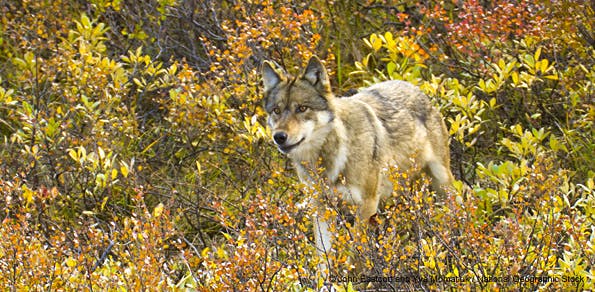Will Montana go the way of Idaho? – The Montana Fish, Wildlife and Parks Commission gave tentative approval last night for more liberal regulations for the 2012-2013 wolf hunting season that begins this fall. Proposed changes include:
- Eliminating quotas in nearly all hunting districts across the state
- Extending the season by two months and into the breeding season
- Allowing wolf trapping for the first time
- Permitting the use of electronic calls that are generally not allowed for other game species
- Tripling the number of wolves that each hunter or trapper can kill.
Why the more aggressive regulations? Intense political pressure. And Montana is responding by proposing a reduction from about 650 wolves down to 425. In doing so, they’re stealing a page from Idaho’s playbook by basing their decision on anti-wolf rhetoric rather than sound science.
 However, state wildlife managers are hearing from a lot of wolf supporters too. A number of Defenders’ Montana members did a great job testifying or submitted comments to the Montana Fish Wildlife and Parks Commission in support of wolves, and Defenders provided official testimony on behalf of all our members and supporters, including over 4500 in Montana.
However, state wildlife managers are hearing from a lot of wolf supporters too. A number of Defenders’ Montana members did a great job testifying or submitted comments to the Montana Fish Wildlife and Parks Commission in support of wolves, and Defenders provided official testimony on behalf of all our members and supporters, including over 4500 in Montana.
There is no good justification for Montana to abandon its more measured approach to wolf management. Livestock losses are at a five-year low, and elk populations are still healthy across the vast majority of the state. As our Rocky Mountain Region Director Mike Leahy told the Commission, we’d rather see the state continue to manage the current population sustainably, rather than trying to kill hundreds more wolves next year.
We’ll need the help of all our wolf supporters in Montana to counter the loud anti-wolf voices. FWP is holding five meetings across the state to gather public input, and comments can be submitted until June 25. The Commission is expected to take a final vote at its meeting on July 12.
Help us urge the Commission to oppose the more aggressive hunting regulations to avoid the kind of reckless and unnecessary slaughter of wolves that we’ve seen in Idaho. Wolves are an important part of Montana’s wildlife heritage that should be managed as a valuable resource.
OR7 photographed in California – Despite his best efforts, California’s most notorious (and only) wolf couldn’t shake the lens of the paparazzi. Richard Shinn with the state Department of Fish and Game spotted OR7 in Modoc County on Wednesday and snagged the first photo of the lone male wolf in California:
OR7 has been in California since mid-April on his latest jaunt, but continues to cross between southern Oregon and northern California. So far, he has avoided getting into much trouble. But that hasn’t stopped the usual contingent of radical ranchers from trying to cause a ruckus anyway. In Siskiyou County, one local supervisor has even authored an ordinance that would banish wolves from its borders. The ordinance, if passed, is unlikely to survive legal challenge as it would contradict federal law by allowing ranchers (or anyone else) to shoot “trespassing” wolves. But instead of relying on the courts, Defenders and other conservation groups are already working with state wildlife managers and local ranchers to find ways for wolves and people to coexist.
Keep track of OR7’s movements in California here.
A week of wolf action – In case you missed it last week, Defenders celebrated, er, lamented the one-year anniversary of wolf delisting (see our press release). We launched a week of wolf action to bring critical attention to Idaho’s poor management of wolves that allowed more than 400 wolves to be killed in one year. Our wolf expert Suzanne Stone was interviewed for a short radio segment on Idaho Public News Service to talk more about it. Listen below:
Audio clip: Adobe Flash Player (version 9 or above) is required to play this audio clip. Download the latest version here. You also need to have JavaScript enabled in your browser.
You can help us continue to raise awareness by sharing your concerns about wolf management in the West. Click here to see our full wolf week action toolkit.
Wolf biologists at work in Yellowstone – Studying wolves in Yellowstone National Park is vital to our understanding of the importance of the species and the role wolves play in the greater ecosystem. Thanks to radio and GPS collars used to survey individual packs, each year park biologists gather new information by tracking wolves and monitoring their behavior,. Here’s a look behind the scenes at some of the hard work that goes into collecting data for this fascinating area of research.







Follow Defenders of Wildlife
facebook twitter instagram youtube tiktok threads